![]()
Thursday, October 29, 2015 | By Dr. Raz Zimmt[1]
This study is originally published by The Meir Amit Intelligence and Terrorism Information Center. The study is structured in nine sections (see below), which if read in conjunction with each other, draws a complete picture of Major General Qasem Soleimani (Haj Qasem), commander of the Iranian Islamic Revolutionary Guards Corps’ Qods Force, instigator of Iranian Subversion and Terrorism in the Middle East and around the Globe.
Iranian support for Hezbollah until the outbreak of the civil war in Syria
For years Lebanon had been considered the flagship of the Qods Force’s activity to promote the armed campaign against Israel. After he was appointed commander of the Qods Force, Qasem Soleimani worked to improve relations with Hezbollah and transferred resources to the organization, which focused on fighting against the IDF in the security zone in south Lebanon. In Lebanon the Qods Force had a regional headquarters called the Lebanon Corps, which collaborated closely with the Syrian regime and exploited Syria as the main transit point for shipments of weapons from Iran to Hezbollah in Lebanon.
Qods Force support for Hezbollah increased after Israel withdrew from the security zone in May 2000. A long-range rocket infrastructure was established that threatened (and threatens) the Israeli home front, which was put into operation during the Second Lebanon War (July-August 2006). The Qods Force gave Hezbollah massive support during the Second Lebanon War and was integrated into the organization’s command units. Qasem Soleimani gave a World Jerusalem Day speech on October 20, 2006, a few months after the end of the war, in which he spoke about the significance of the war’s outcome and its influence on the Palestinian arena. He said that “with Hezbollah’s victory in the Lebanon a new Middle East has been created, not an American Middle East but an Islamic one…At the same time as jihad groups were being formed in Palestine, a Shi’ite organization called Hezbollah in Lebanon exported to Palestine the model of the way to live a life of faith. Hezbollah played a central role in turning the stones of the Palestinians into rockets…The [firm] stance of Hamas strengthened the security of the Arab states but to our sorrow the Arab rulers were traitors…Jerusalem Day marches increase the pressure on the Islamic governments in favor of peace, and that will lead to the failure of the plots of the United States and Israel (Fars News, October 20, 2006).
Since the end of the war, the Qods Force has had a central role in reconstructing Hezbollah’s military infrastructure. It has supplied Hezbollah with cutting-edge weapons (guided missiles, SA-22 anti-aircraft missiles and Yakhont antiship cruise missiles), smuggled from Iran to Lebanon (for the most part through Syria). Over a period of year and with Syrian collaboration, the Qods Force constructed for Hezbollah an effective military infrastructure with an arsenal of more than 100,000 rockets and missiles, including missiles with precise guidance systems that threaten the military and civilian infrastructure of the State of Israel. The arsenal will be activated in accordance with Iran’s strategic considerations.
Hassan Nasrallah, the leader of Hezbollah, has repeatedly boasted of the military capabilities his organization received from Iran, especially its ability to attack Israeli civilians and Israel’s civilian infrastructure. For example:
- In his 2012 World Jerusalem Day speech, Nasrallah boasted that Hezbollah had “precise missiles, a small quantity of which can hit pinpoint targets.” He added that Hezbollah had a number of missiles that could hit many targets in Israel and that Hezbollah had their coordinates. Attacking those targets, he said, “will turn the lives of thousands of Israelis into a living hell.” He said it would mean tens of thousands of Israeli civilian dead, “not 300 or 400 or 500” (Al-Manar TV, August 17, 2012).
- During an interview with Al-Mayadeen TV, Nasrallah was asked about turning the lives of hundreds of thousands of Israelis into a living hell. He claimed that Israel would not be able to win with a blow to Hezbollah’s rocket arsenal. That, he said, was because even after Israel’s first blow, Hezbollah would still have “a few missiles” that would be “able to turn the lives of hundreds of thousands of Israelis into a living hell.” He claimed Hezbollah had “a bank of targets” including civilian, economic and industrial targets, power plants and nuclear installations. “They have,” he said, “power plants in the center of the city, and if they are hit, not only will the lights go out but it will have an enormous economic influence.” He boasted that “every target in the length and breadth of occupied Palestine…can be hit by the rockets of the resistance…” (Al- Mayadeen TV, September 3, 2012).
Iran continues its flow of weapons to Hezbollah, including smart missiles, advanced aerial defense systems, and anti-ship missiles.[10] The weapons are sent from Iran to Syria and from there to Lebanon. It can be assumed that the Qods Force, which manages the construction of Hezbollah’s military infrastructure, is also involved in transferring weapons to Hezbollah in Lebanon, even at the height of the Syrian civil war.
Hezbollah’s involvement in the Syrian civil war
The Syrian civil war made it necessary for Iran to put the survival of the Syrian regime at the top of its priority list. To that end Iran used the Qods Force to enlist Hezbollah, its most effective proxy in the Middle East. Hezbollah was asked to participate in the fighting alongside the Syrian security forces and Shi’ite foreign fighters from countries like Iraq and Afghanistan, who operate in Syria under the aegis of the IRGC. As a result, during the past two years most of Qasem Soleimani’s efforts regarding Hezbollah have dealt with coordinating the fighting in Syria and integrating Hezbollah fighters in the most effective way possible.
During that time, insofar as is known, Qasem Soleimani has been to Lebanon only once. He went there after the aerial attack, allegedly carried out by Israel, in the region of Quneitra on January 18, 2015. The attack was intended to prevent Iran and Hezbollah from establishing an anti-Israeli terrorist infrastructure in the Golan Heights. Six Hezbollah operatives were killed, among them Jihad Mughnieh, the son of Imad Mughnieh, the former head of Hezbollah’s military-terrorist wing, who was killed in 2008. A high-ranking IRGC officer was also killed. According to Lebanese media reports, Qasem Soleimani visited Lebanon only 48 hours after the Quneitra attack. He met with Hassan Nasrallah and paid a condolence call to the Mughnieh family (Al-Manar, January 31, 2015).
It can be assumed that Qasem Soleimani and Hassan Nasrallah discussed coordinating Hezbollah’s response to the IDF attack in a way that would not harm Iranian interests (since at the current time it is not in Iran’s interests to divert its efforts and attention from Syria to Israel). On January 28, 2015, ten days after the meeting, Hezbollah did in fact carry out a combined terrorist attack of anti-aircraft and mortar shell fire that targeted an IDF force in the Har Dov region, killing two IDF soldiers. In that way Hezbollah “repaid” Israel without causing an unwanted escalation.
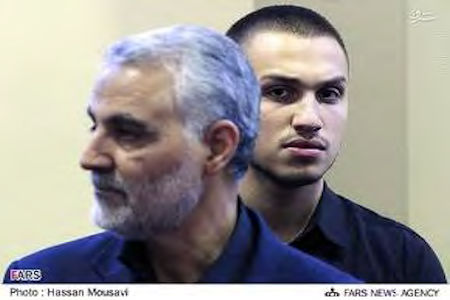
Qasem Soleimani at the funeral held for Jihad Mughnieh, who was killed in an attack attributed to the IDF in Quneitra (Fars News, January 19, 2015).
![]()
You can find the introduction and other sections here:
- Introduction: Portrait of Qasem Soleimani, commander of the Iranian Islamic Revolutionary Guards Corps’ Qods Force
- Section 1: A short biography of Qasem Soleimani
- Section 2: Qasem Soleimani’s involvement in the Syrian civil war
- Section 3: Qasem Soleimani’s involvement in Iraq
- Section 4: Qasem Soleimani’s involvement in the Palestinian arena and Israel
- Section 6: Qasem Soleimani’s involvement in Yemen and other Middle Eastern states
- Section 7: Qasem Soleimani’s involvement in internal Iranian politics
- Section 8: Qasem Soleimani’s public image
- Section 9: Possible lifting of international sanctions on Qasem Soleimani in the wake of the nuclear agreement
![]()
Notes:
[1] This study of Qasem Soleimani was written for the Intelligence and Terrorism Information Center (ITIC) by Dr. Raz Zimmt, a research fellow in the Alliance Center for Iranian Studies in Tel Aviv University and a research fellow at the Forum for Regional Thinking. His fields of expertise include the politics, society, foreign policy and social networks in the Islamic Republic. The study was coordinated with ITIC research fellows and includes information previously appearing in ITIC publications about the Qods Force.
[10] Speaking to the UN General Assembly on October 1, 2015, Israeli Prime Minister Benjamin Netanyahu said that Iran had given Hezbollah surface-to-surface target-seeking missiles and attack UAVs to be able to precisely hit any target in Israel. Hezbollah, an Iranian protégé, had smuggled into Lebanon SA-22 antiaircraft missiles and Yakhont anti-ship cruise missiles to be able to attack IDF aircraft and ships (Ynet, October 1, 2015).



 RSS
RSS

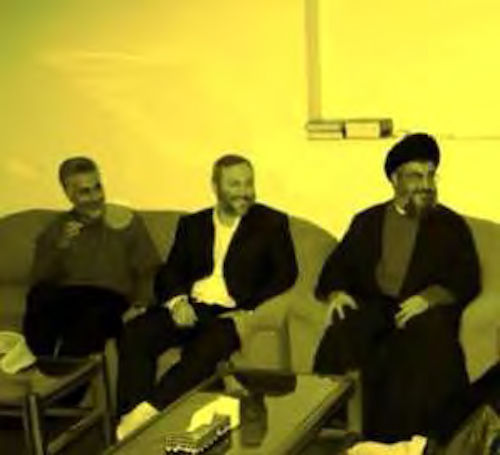

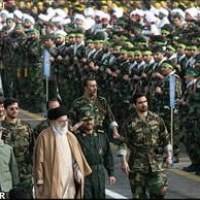
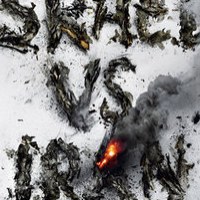
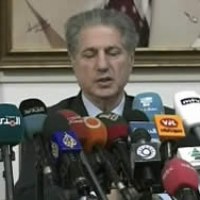
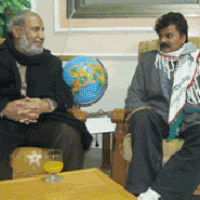




Latest Comments
Hello Mike, Thank you for your positive feedback to the article. I felt there wasn’t too much critical analysis of ...
Thanks for this considered and well constructed article. A follow up article on the manner in which the editorial contro...
THE CLUELESSNESS OF CLAIMING THAT OBAMA'S MIDDLE EAST POLICIES WERE A FAILURE CANNOT BE FURTHER FROM THE TRUTH, WHAT THE...
As long as Obama is the president of the usa do not trust the us government......
Thank you for an good read....